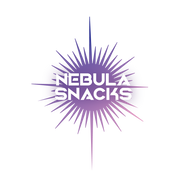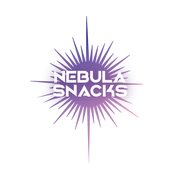David here - Co-Founder of Nebula Snacks - and an explorer of low-calorie sweeteners.
I am what’s known in the business as a “Super Snacker” - someone who snacks 4-5x a day, which according to Mintel research is 18% of the U.S population. With this title comes a great responsibility - to be conscious of my added sugars, because they’re not great for me in excess. In fact, the American Heart Association (AHA) suggests an added-sugar limit of no more than 100 calories per day (~6 teaspoons/24 grams) for most adult women and no more than 150 calories per day (~9 teaspoons/36 grams) for most men.
So many snacks out there today, particularly chocolate bars like Hershey’s and Snickers can reach that limit in just one serving!
I needed to explore new alternatives and came across Monk Fruit. You may not be familiar with this fruit native to Asia - but it is quickly becoming mainstream to those searching for sugar-free snacks and those in the Diabetic community.
What is Monk Fruit?
Monk Fruit, also known as Lo Han Guo, is a small green melon native to Southern China and is named after the monks who first cultivated is centuries ago. The health benefits of the fruit have been well known in Traditional Chinese Medicine (TCM) for decades, but the sweet secret is out and has made its way to America!
The monk fruit sweetener is made from an extract derived from dried monk fruit itself. The extract is created by removing the seeds and skin, crushing the fruit and collecting the juice. This sweetener is now often used in food and beverages because it is 150-250x sweeter than table sugar, has zero calories and carbs, and does not impact blood sugar/glucose levels.
Many existing sugar substitutes can cause side effects like gas and bloating - and particularly some artificial sweeteners like Equal and Splenda or sugar alcohols like erythritol and Maltitol are controversial in the market. However, in the case of monk fruit sweeteners, there are no known side effects. Since 2010, the U.S Federal Drug Administration (FDA) has recognized monk fruit extract as Generally Recognized as Safe (GRAS) - including for pregnant women and children.
Does monk fruit raise blood sugar?
The quick answer is No! Monk fruit does not increase your blood sugar or effect the glycemic index.As such, It is safe to consume if you have type 2 diabetes. It tastes incredibly sweet, but it does not contain regular sugar that has the potential to spike blood sugar levels.
What are the health benefits of monk fruit?
1. Safe for people with Diabetes
Monk fruit does not affect blood sugar/blood glucose levels, meaning it is a safe choice for people with Diabetes.However, many products that show as “Sweetened with Monk Fruit” may also include additional sweeteners and other ingredients that increase the carbohydrates and calories which could affect insulin sensitivity. It’s important to always review the nutrition label to ensure the products are in fact carb-free, low-carb or sugar-free.
2. Anti-inflammatory properties
Monk fruit gets its sweetness from natural compound called mogrosides, which have been found to include antioxidant characteristics. Those antioxidants can protect cells from damage that causes inflammation, meaning that monk fruit also has some anti-inflammatory properties.
According to a 2011 study, monk fruit was used in TCM due to its anti-inflammatory properties to make hot drinks and teas that would reduce sore throats and phlegm.
3. Can help promote weight loss
Monk fruit is a true zero-calorie sweetener, with no carbs or fats - and when consumed as part of a balanced diet, can help reduce overall calorie consumption and help those looking to lose weight.
What can monk fruit be used for?
Monk fruit is primarily found in powdered form today and can be used as a natural sweetener alternative to sugar for many different types of snacks, foods and beverages.
Here are some thought starters to using monk fruit for a sugar-free delight:
- Ice cream
- Frozen yogurt
- Homemade popsicles
- Oatmeal
- Chocolate mousse
- Sauces and salad dressings
- Lemonade, smoothies and fruit juice
- Tea and coffee
Note: Because monk fruit is 150-250x sweeter than table sugar, I'd recommend bing conservative with the amount you put in all of the above. If you put too much it may lead to a bitter after-taste in your sweet treats!
How does Nebula Snacks use monk fruit?
Nebula Snacks offers sugar-free snacks by incorporating a proprietary sweetener blend for our dark chocolate and oat milk chocolate bars including allulose, monk fruit and plant fibers. Our mission is to create healthy snacks that are better for humans and better for the Earth.
Check out the Nebula Chocolate Variety Box to see how we use monk fruit to make delicious chocolate without the sugar - perfect for on-the go healthy snack, the after dinner treat, or packed in your kids lunchbox.
Submit your snack ideas, recipes or how you’re enjoying your chocolate to the Nebula team at greetings@nebulasnacks.com for a chance to be featured on our site and social!

